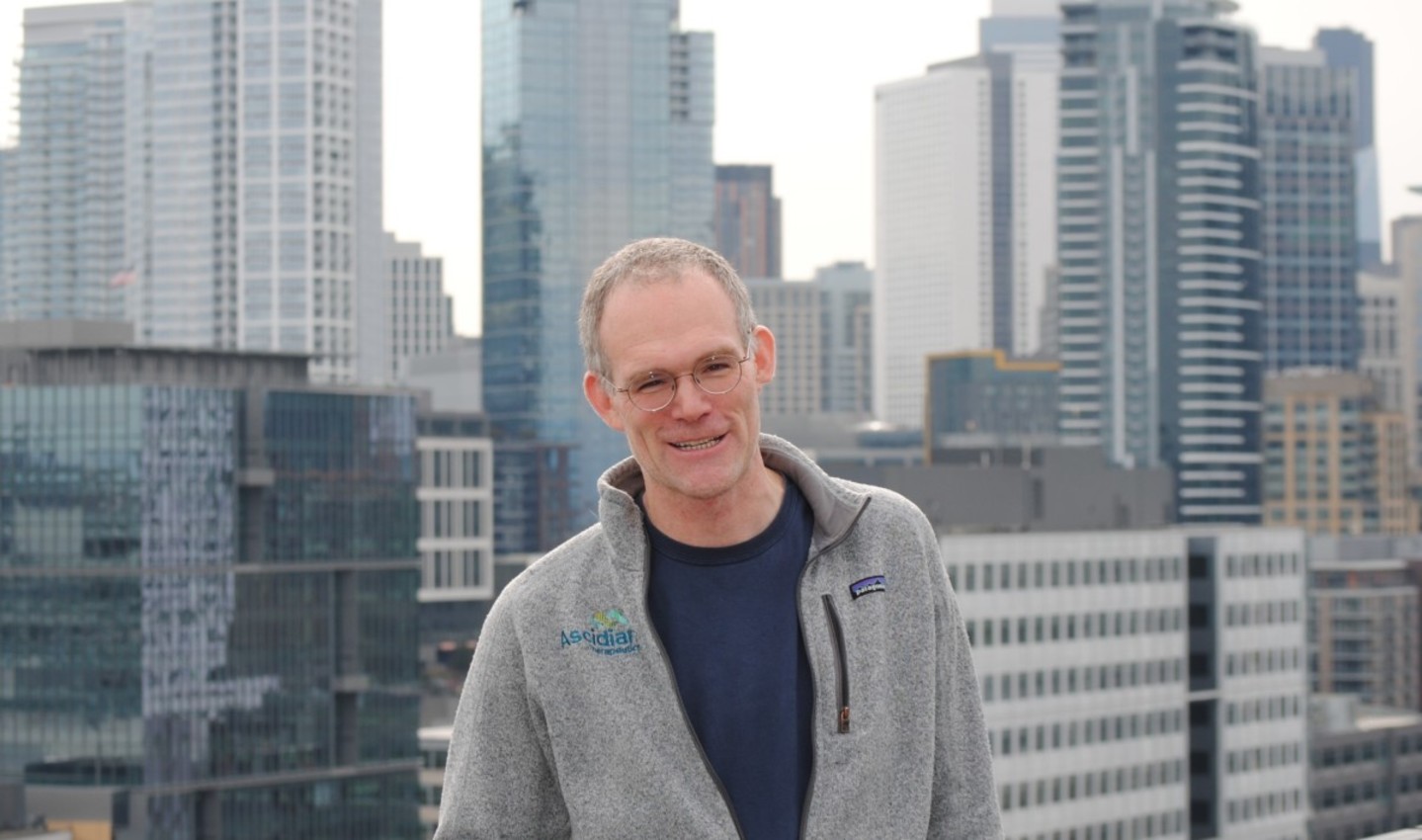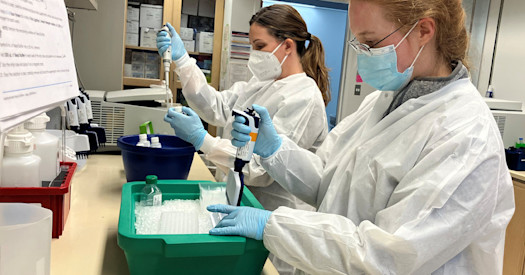 Dr. Jesse Gray: SeaHub 'is like starting from a recipe, building a kitchen, and making a dish that’s ready to serve, with more dishes in the oven.'
Dr. Jesse Gray: SeaHub 'is like starting from a recipe, building a kitchen, and making a dish that’s ready to serve, with more dishes in the oven.'
The “summary” section of Jesse Gray’s resume is short and understated: “I build teams to create new technologies.”
Those teams included one that discovered enhancer RNAs, results of which were published in a 2010 Nature paper that has been cited nearly 3,000 times. That paper was part of Gray’s work on understanding how nerve cell activity orchestrates gene expression, carried out as a postdoc and faculty member at Harvard Medical School.
Ten years later, he joined Boston-based gene therapy start-up Ascidian Therapeutics at its inception. As “Head of Discovery,” Gray hired, inspired, and mentored a team contributing to Ascidian’s Investigational New Drug approval for treatment of Stargardt disease, an inherited loss of vision. He calls it his “operations postdoc.”
Gray, 48, has now embarked on what may be the greatest opportunity – and most daunting challenge – of his career: reengineering cells to record their own histories and reprogram disease to health. As Senior Director of Strategy and Operations, he is supporting Lead Scientific Director and “Imaginer-in-Chief” Jay Shendure M.D., Ph.D., by tending to the day-to-day operations of the Seattle Hub for Synthetic Biology, the landmark five-year, $70 million collaboration among the UW Medicine Brotman Baty Institute, the Allen Institute, and the Chan Zuckerberg Initiative.
“SeaHub is fantastically exciting,” said Gray, who holds a Ph.D. in Biochemistry from the University of California, San Francisco. “Biotechnology is a limitless substrate for human creativity. It’s exciting because of the invitation to imagine.”
That invitation comes from Shendure who is also BBI’s scientific director. “It’s been said that Jay is like a spy who’s come back from the future with a blueprint,” Gray said. “Except that he didn’t actually steal it from the future.”
SeaHub: To boldly go where no scientist has gone before
The ambition of that blueprint, Gray said, is encapsulated in a scene from the film “Star Trek IV: The Voyage Home,” where the character of Dr. Leonard “Bones” McCoy, traveling back in time to the mid-1980s, is walking through a hospital and encounters a woman on a gurney, moaning in agony.
“What’s the matter with you?” he asks.
The woman replies, “Kidney dialysis.”
Shocked, the doctor says, “Dialysis? My God! What is this? The Dark Ages? Here, you swallow that.” He places a pill in her hand. “And if you have any problems, just call me.”
Later, Dr. McCoy and Admiral James Kirk are rushing down a hallway and the woman, now exuberant and smiling in a wheel chair, is yelling to anyone who will listen, “The doctor gave me a pill and I grew a new kidney!”
Gray said the episode illustrates how crude contemporary technologies will look in the future when looking back on them – and pointed to Shendure’s affection for this scene as illustrative of his ability to inspire colleagues at the SeaHub and beyond.
“Jay didn’t just dig up the video of the episode,” said Gray. “He found a Reddit thread about what might have been in the pill. He’s looking to see where technology can take us, half a game of chess into the future,” Gray said. “That’s how we know where to make the first move.”
In addition to Gray and Shendure, the SeaHub leadership team includes; Scientific Co-Director Marion Pepper, Ph.D., chair of the UW Medicine Department of Immunology; Scientific Co-Director Cole Trapnell, Ph.D., professor in the UW Medicine Department of Genome Sciences, and Director of Operations Robin Prentice, Ph.D. Pepper and Cole are BBI members, and Prentice has operational responsibility across the SeaHub, including at the BBI.
In announcing SeaHub last December, Shendure said: “Imagine being able to put a smartwatch into each of your cells to record to the genome itself everything that cell is experiencing. Currently, when biologists take measurements, we’re limited to either observing how a few things change over time with a microscope, or to measuring everything but only at the moment in time that we break open the cell. With the kind of genomic smartwatch that we’re aiming to build, one could recover the full autobiography of each cell, rather than only the last page.”
This new paradigm has the potential to transform how scientists study the role of cells and genes in human health by providing unprecedented clarity into how biological events unfold over time, Shendure said. These events include molecular and cellular causal chains that begin with a genetic mutation and culminate with a developmental disease seen in a clinic.
Can this “new paradigm” be accomplished in only five years? Gray answered that question with grounded optimism.
“We’re not going to solve the whole shebang in five years,” he said. “What we can do is take it to the limit of our current imagination and beyond.”
He explained the SeaHub team needs to go from prototype to platform to product well inside of five years.
“It’s like starting from a recipe, building a kitchen, and making a dish that’s ready to serve,” he said. “With more dishes in the oven.”
The “recipe” is interpreted from several papers, including the “DNA Typewriter paper,” published in 2022 in Nature and on which Shendure and his lab researchers collaborated with colleagues at the Allen Discovery Center for Cell Lineage Tracing. The “kitchen” is a start-up-style platform for human cell and genome programming, one that iteratively improves technologies like a “DNA Typewriter.”
Moreover, Gray said: “The dish we’re serving first is a mouse in which every cell can record its own history over time. The first one might not record well. But we’ll keep at it.”
He said they are currently consolidating all the recording machinery into one location in the genome of a mouse embryonic stem cell, which will then be made into a whole mouse.
A July 2022 article on the Allen Institute website states: “The DNA Typewriter could be used to trace every single cell in a developing animal thanks to two key features of the technique: its ability to encode more than 4,000 unique barcodes in various combinations into individual cells, and its ability to leave a timestamp of sorts on each message it encodes.”
It's a safe bet the recipe, dishes, and kitchen will improve over time.


